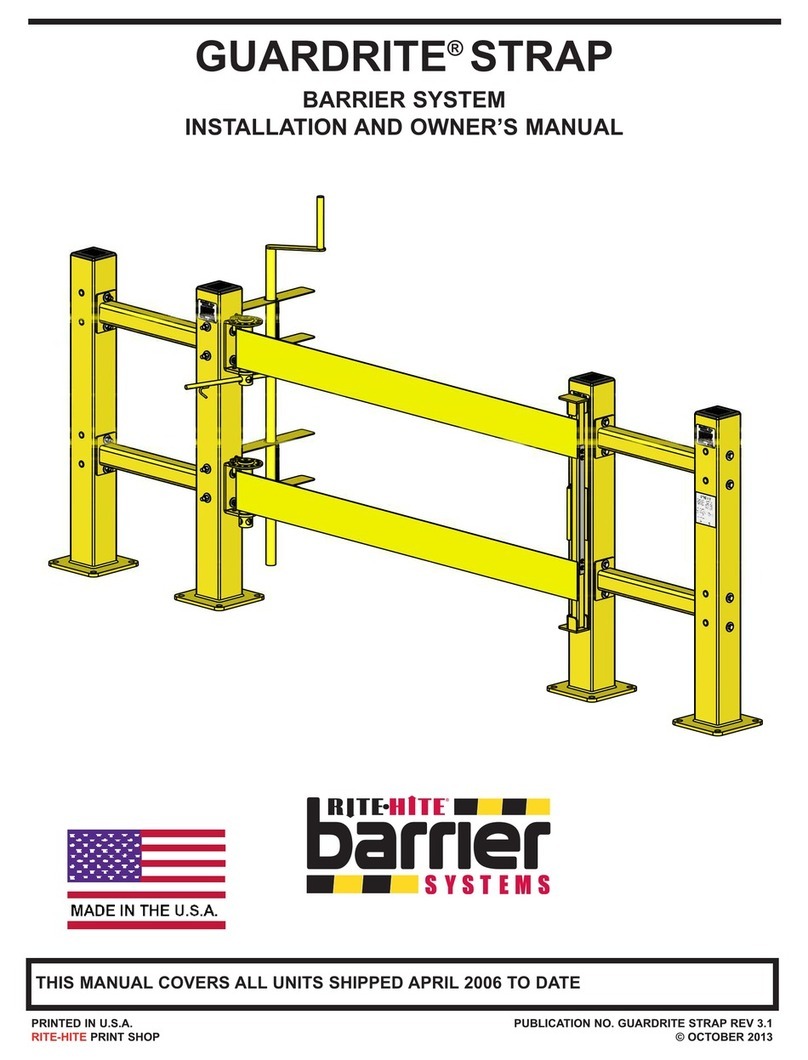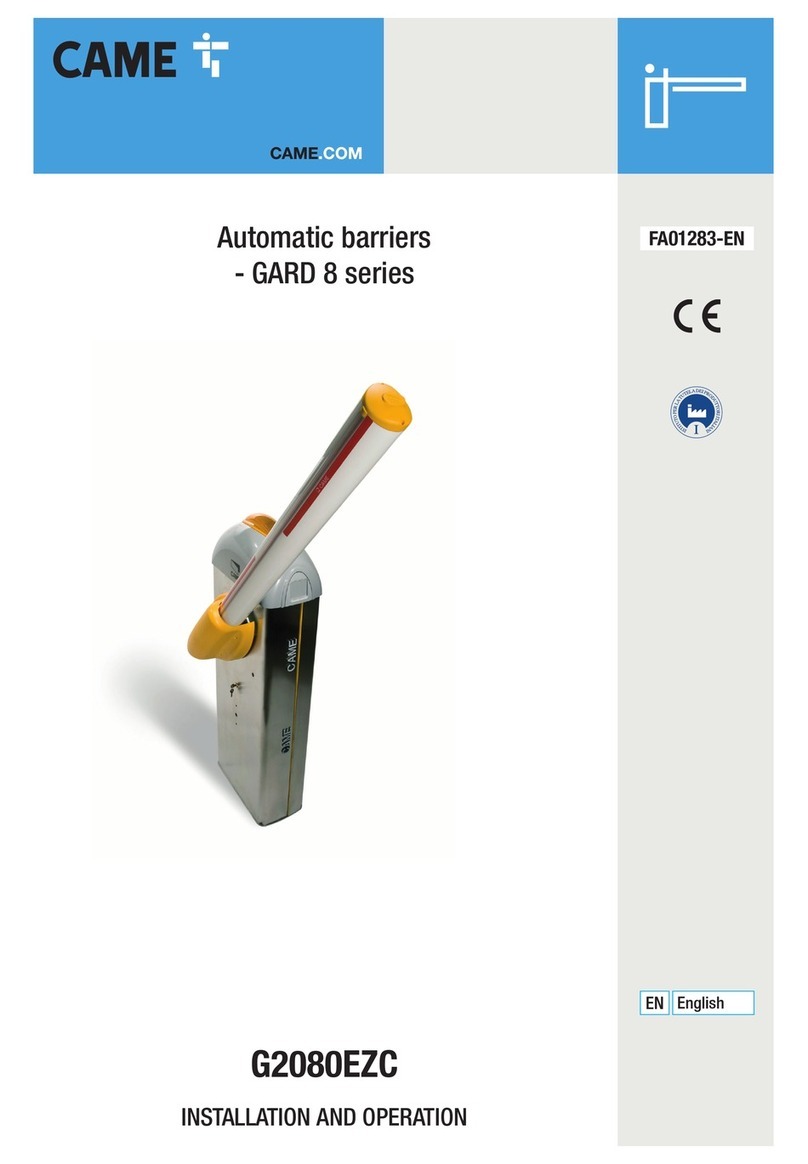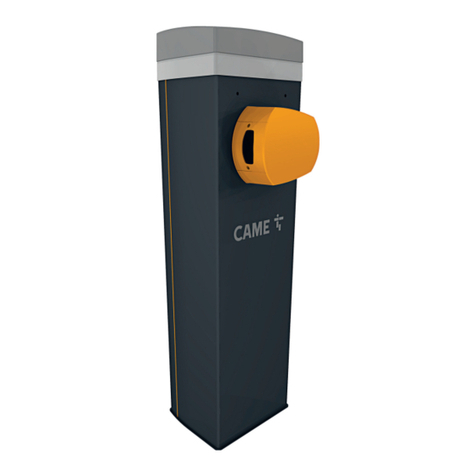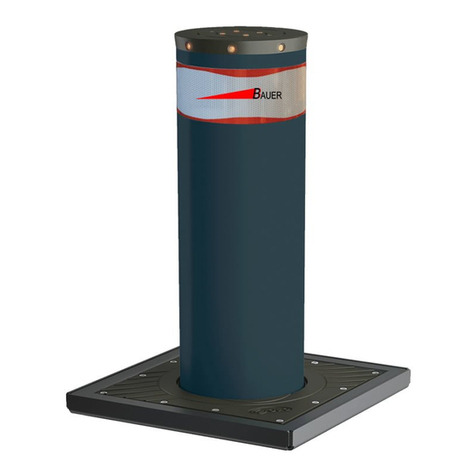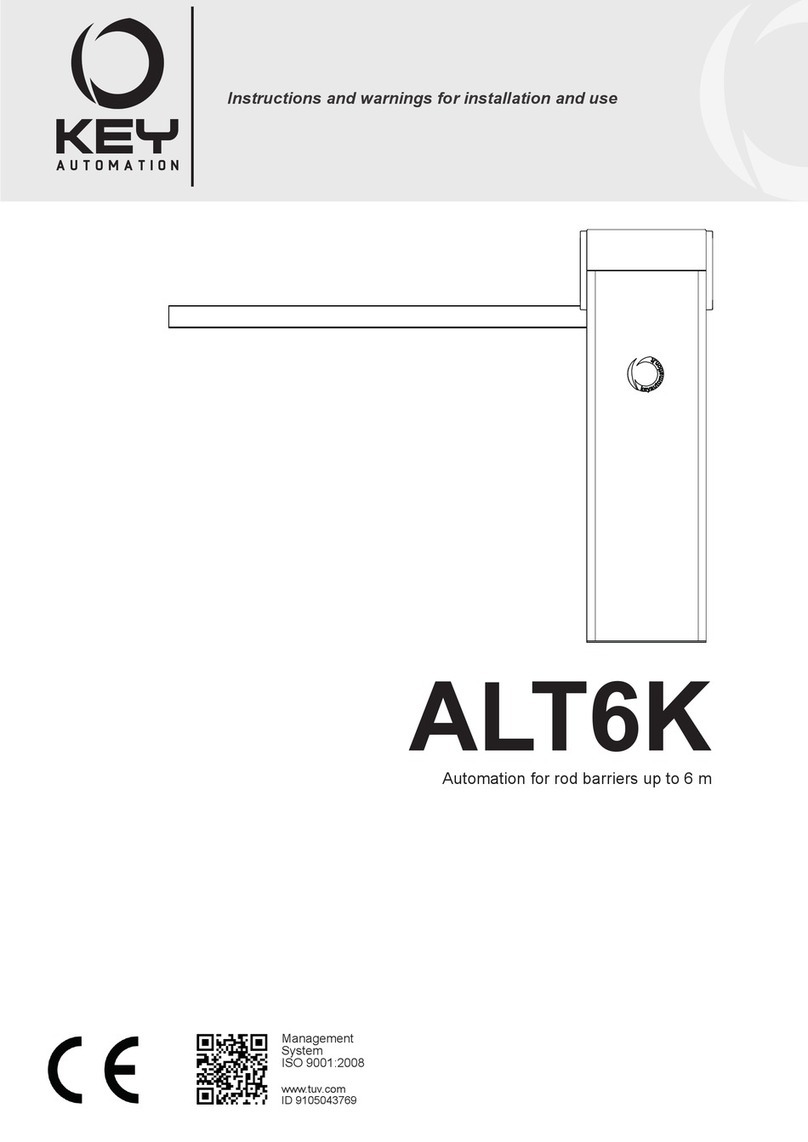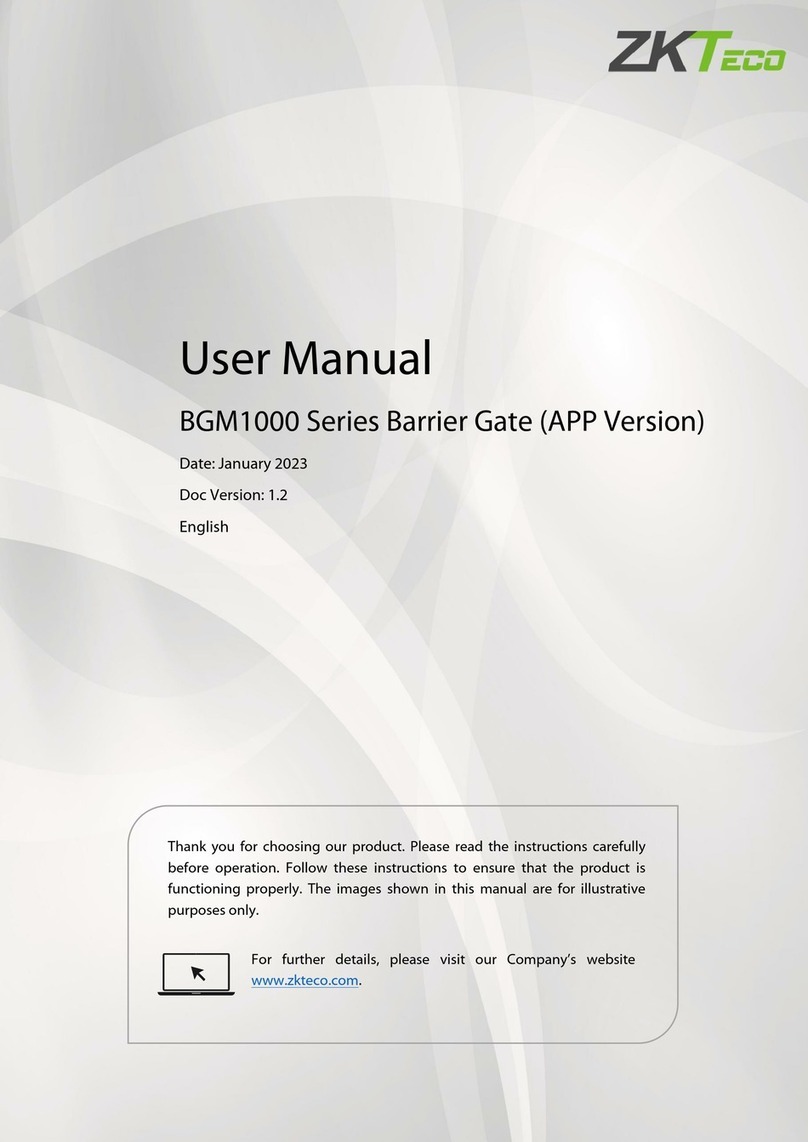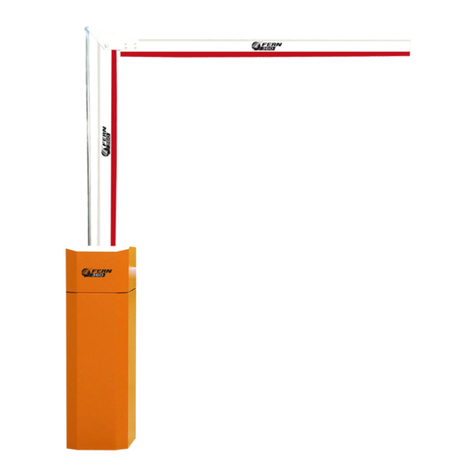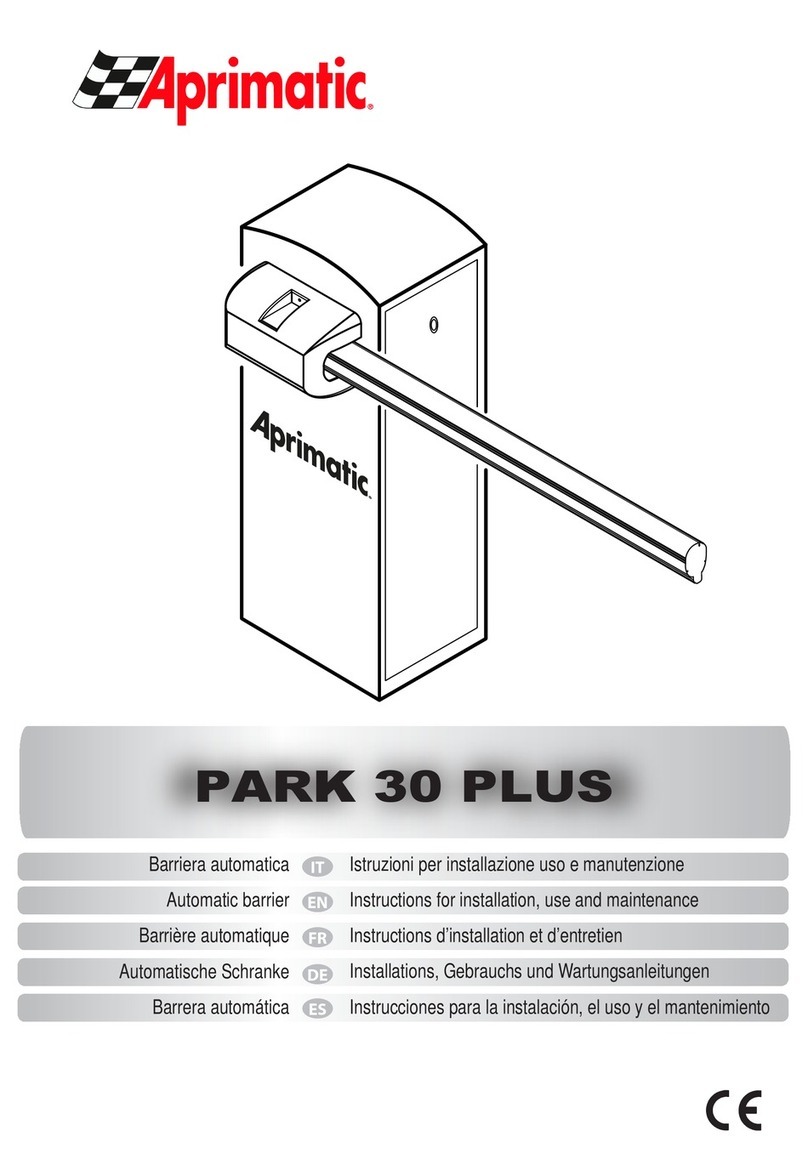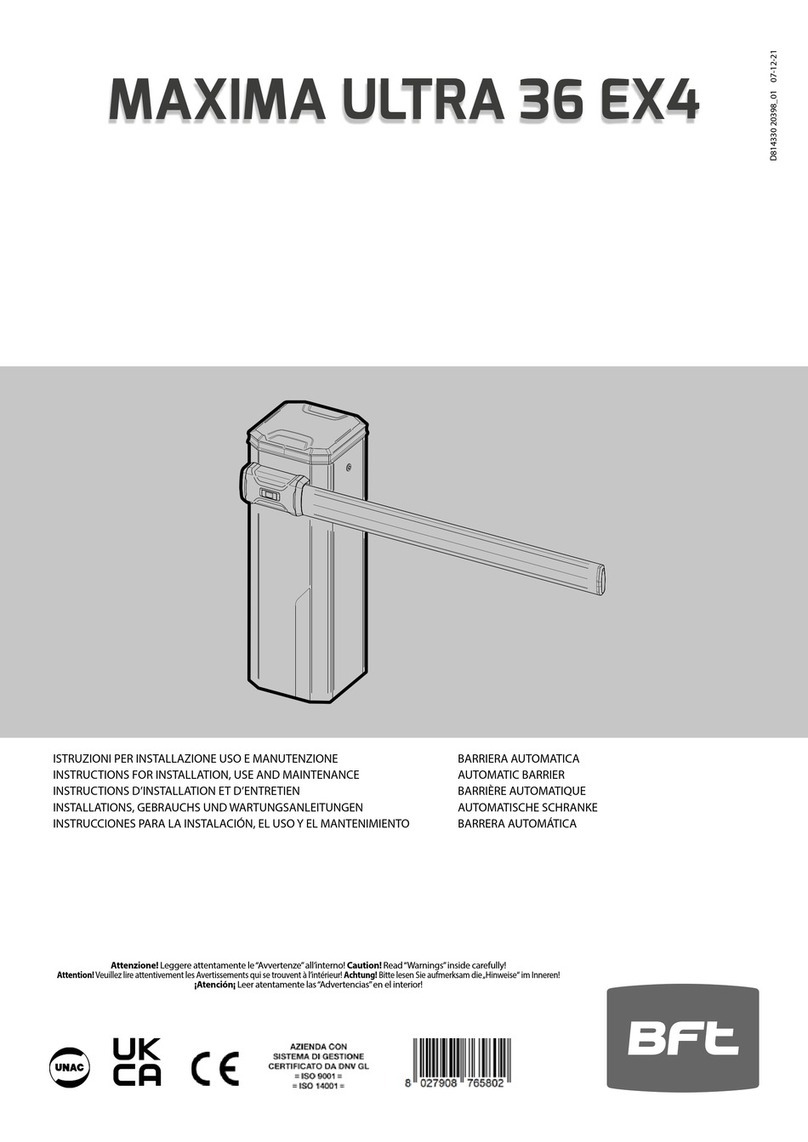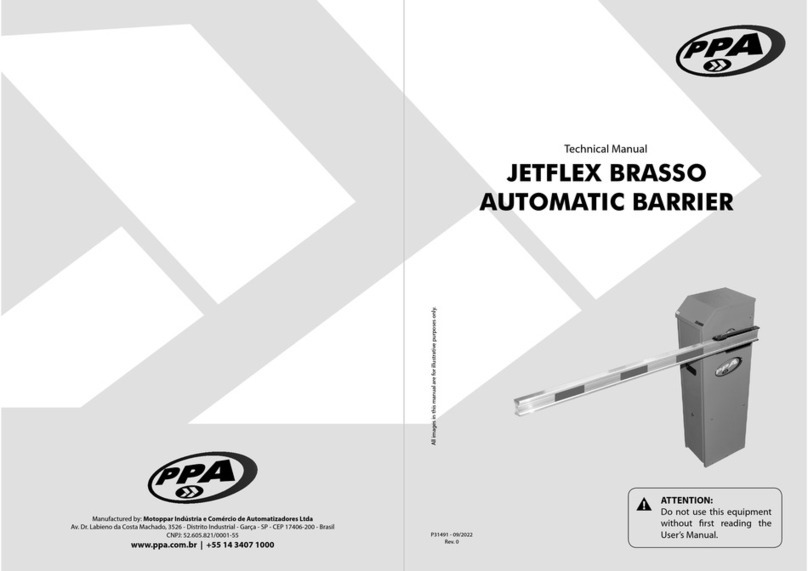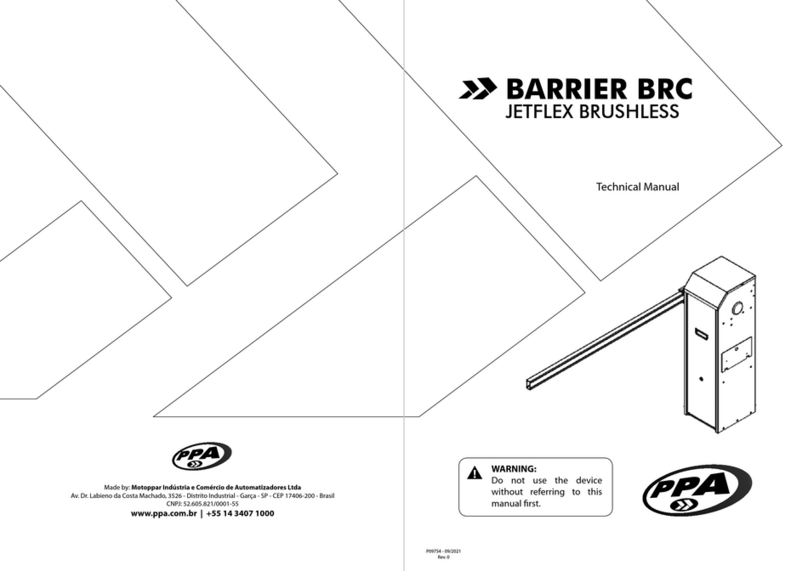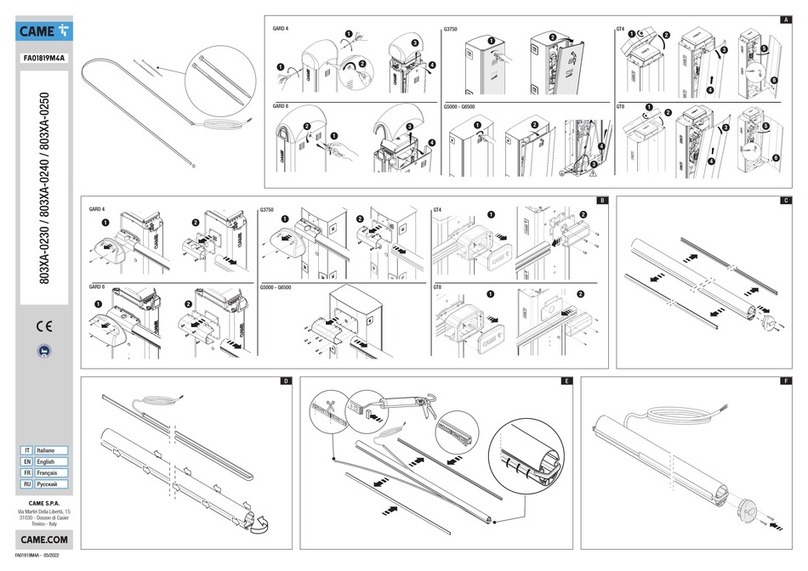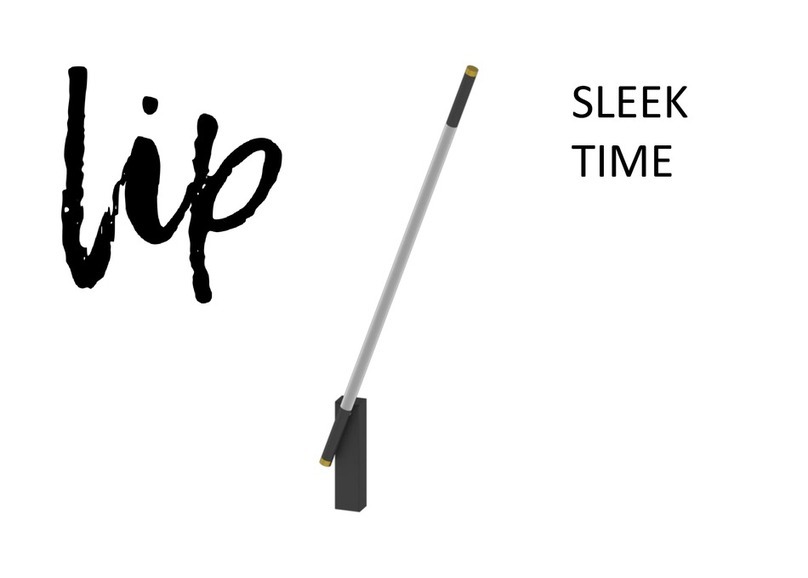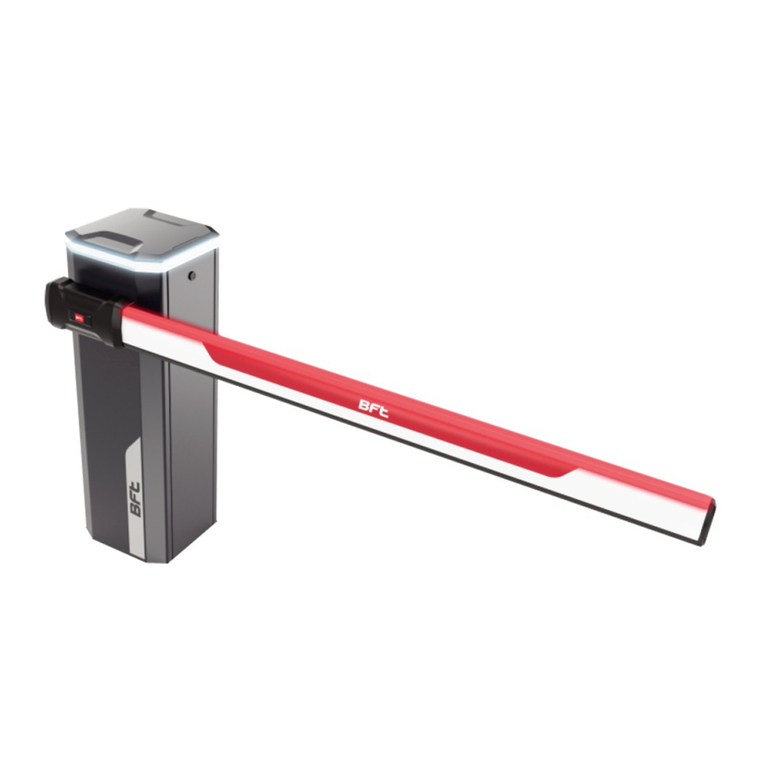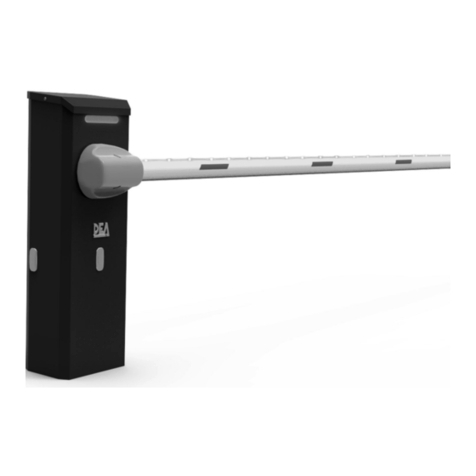
3
INSTALLATION LOCATION
The location where the barrier will be inalled mu be previously analyzed,
including the entire site infraructure, oor conditions, electrical power
supply, passageway width, ceiling height (if any), vehicle ow and the need
to use optional accessories.
Once it is analyzed, the equipment that be ts the needs of the place
should be chosen.
NOTE: Using articulated barriers is usually recommended in places with
low ceilings. In this case, contact the factory to have a barrier with the
proper size for inallation in the specic location supplied.
IMPORTANT
Check if any obacles could interfere with the complete barrier
opening and closing. If so, the equipment inallation will be impaired,
and repairs to the local infraructure will be necessary. Carefully
choose the model according to its technical features and where it will
be inalled. Notice the need for optional accessories. Calculate the
ow of vehicles on site.
NOTE: If the oor does not meet the above specications, a concrete
base plate respecting the cabinet base dimensions mu be provided to
x the cabinet. The concrete base plate should be inalled at a minimum
height of 100 mm from the ground.
Preparing the location:
1. Run a 3/4" conduit pipe through the oor or concrete base plate from
the center of the base to the circuit breaker box inalled from where the
equipment's electrical supply will come.
2. Run the power and pushbutton cables through this pipe to where the
equipment will be operated. Check the table below to choose the cables
according to the NBR 5410 andard.
TABLE OF CONTENTS
Installation location.......................................................................................................................................................................................................3
General features................................................................................................................................................................................................................4
Technical Specifications............................................................................................................................................................................................5
Equipment dimensions..............................................................................................................................................................................................5
Building the base plate to install the cabinet.........................................................................................................................................6
Installing the barrier .....................................................................................................................................................................................................7
Balancing the barrier and checking the belt........................................................................................................................................12
Adjusting the magnet bars..................................................................................................................................................................................13
Operation............................................................................................................................................................................................................................14
TRIFLEX CONNECT AC control board ..................................................................................................................................................14
Encoder system (Digital Reed).........................................................................................................................................................................14
